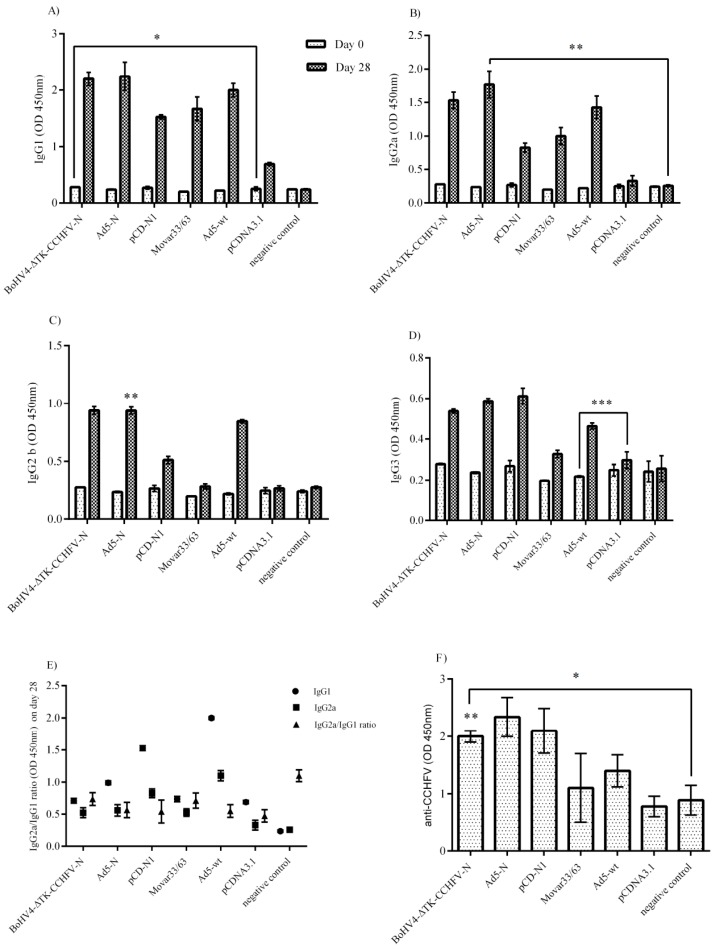Figure 3.
Serological Assays. Total antibody isotype responses and ELISA assays were performed in BALB/c and IFNα/β/γR−/− mice serum samples, respectively. (A) IgG1 response: pCD-N1-immunized BALB/c mice showed higher levels of this antibody than other N-expressing constructs. (B) IgG2a response: considering the respective backbones, the BoHV4-∆TK-CCHFV-N and pCD-N1 groups had more potential to stimulate IgG2a production. (C) IgG2b response: considering the N-expressing groups and related backbone subtraction, the BoHV4-∆TK-CCHFV-N group was dominant. (D) IgG3 response: the results were comparable to the IgG1 findings. (E) IgG2a/IgG1 ratio (BALB/c mice): all groups except normal saline demonstrated a ratio <1, indicating a shift towards Th2 responses. (F) ELISA assay from immunized IFNα/β/γR−/− mice: all constructs expressing N protein could produce N-specific IgG antibodies after a 2-dose injection and before the challenge assay on day 28. The highest amount of specific antibodies was detected in the pCD-N1 group when the results were compared to the respective backbones. In addition, the BoHV4-∆TK-CCHFV-N- and Ad5-N-related findings are also significant. All data are shown as mean ± SD.* p < 0.05; ** p < 0.01 and *** p < 0.001 versus respective backbones.

